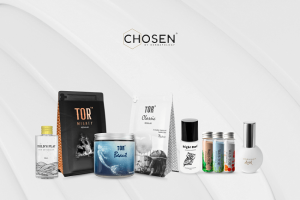Your Ultimate Guide to Choose the Perfect Metal for Your Engagement Ring
Choosing the right metal type for an engagement ring is just as important as the diamond type or gemstone it will hold. It’s time to shop for your unique engagement ring design — and there are several factors to consider.
Picking the metal type is a complicated decision than it used to be. Where it once was a simple choice between yellow colored jewelry and white colored jewelry, now you have a whole range of possibilities to consider.
Consider your fiancee’s preference, style, and then choosing the right metal type and color to complement that particular style. One of the main things you need to consider when picking a metal for a setting is the form of jewelry your future bride typically wears.
- If she is more drawn to cooler colors and silver-toned jewelry, then platinum or white gold is the perfect choice for her.
- Yellow gold jewelry or rose gold are superb choices if she prefer warmer tones.
- Mixing metals like white gold and yellow gold is the superb choice, because it will allow her to complement any jewelry item in her existing jewelry collection.
Platinum
Platinum is a natural white colored metal with a superior luster that shows the extreme brilliance and shine of diamonds. Platinum is a popular choice for engagement ring designs and wedding ring designs, and is considered as one of the most precious of all jewelry metals.
When compared to gold metal, platinum is 5 times as rare and purer when used in jewelry pieces. Platinum is considered as durable, making it the perfect option if your someone special leads an active lifestyle.
The density of the platinum offers a secure setting for pure diamonds or gemstones. Platinum is also hypoallergenic, so it is the perfect choice for those with sensitive skin.
Platinum shine will not fade or change color over time, making re-plating your platinum ring design unnecessary. Because of its high strength, platinum metal is a superb choice for setting pure diamonds.

Gold
Gold is a popular metal, and the most common choice for jewelry items. The standard measurement of gold metal is a carat, which is divided into 24 parts. Pure gold is of 24 carats.
Pure gold is too soft to make jewelry designs, so pure gold is combined with other metal alloys to enhance its strength. You will find 22K gold, but most often gold comes in 18K (75% gold), 14K (58% gold) and 10K (around 42% gold).
The remainder is made up of other metals like copper, silver, nickel and zinc to provide strength and durability. The type and percentage of metal alloys used determine the actual shade and color of the gold.

Gold jewelry generally comes in different colors like white gold, yellow gold, green gold, and rose gold.
Yellow gold
Traditional and fashionable, yellow gold type takes its warm patina from the red color of copper and the green color of silver. Yellow gold lost favor to white gold jewelry for a while, but has recently regained popularity.
White gold
White gold takes its silvery white character from combining yellow gold with copper, zinc and nickel. White gold is plated with a hard element called rhodium. Rhodium is a platinum group metal, which costs around four times as much as platinum, avoids scratches and tarnishing, and gives white gold jewelry a reflective appearance. However, it may wear away over time, needing a quick trip to your jewelry manufacturer for re-plating.
Rose gold
Cool and romantic, rose gold metal has a warm, pink color created by combining yellow gold with a copper alloy. The overall percentages of metal alloys are the same for rose gold type as they are for yellow or white gold; it is simply a unique combination of alloys used.
Green gold
Green colored gold is not so common and nature-inspired. Green gold has a soft, pale green color created by mixing yellow gold with silver, copper and zinc. Use green gold in combination with romantic rose gold and white gold for the special, different tri-color appearance.
Platinum vs. White Gold Jewelry
Platinum metal is around 60% heavier than white gold jewelry, so it is a much denser type of metal available. For this reason it is perfect for diamond settings particularly for small stones where there isn’t much metal to begin with, and it lasts much longer over time and isn’t as susceptible to wear. Many people also like that platinum feels more sturdy.
Belonging to the superior platinum group of metals, palladium is pure at 95% and is quite rare too. Less dense than platinum metal type and therefore less expensive, its cost is more or less similar to that of white gold.
Palladium metal offers more permanent and natural white beauty. Palladium is durable, tarnish-resistant and hypoallergenic. Unlike platinum, which needs re-polishing and white colored gold, which needs re-plating, very little maintenance is required for palladium to stay remain silver-colored. Palladium is a superb metal for diamonds and colorful gemstones.
Final thoughts
Choose your metal type, consider your style and complete the look with a shiny diamond or beautiful gemstone. Design an engagement ring that’s just as unique and beautiful as the woman who will be wearing it.




